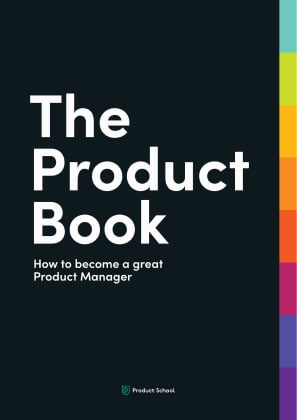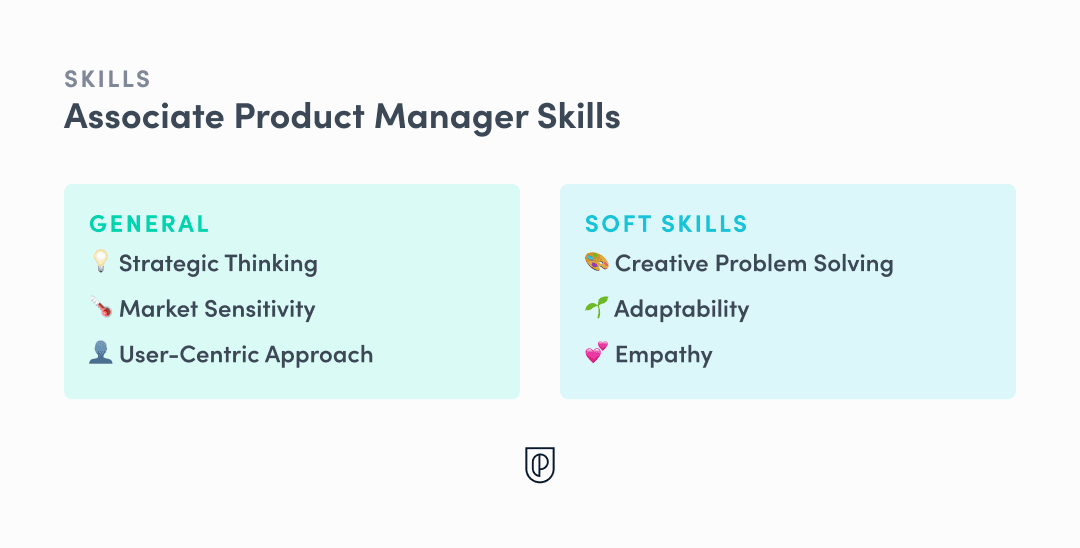Updated: September 17, 2024- 11 min read
An Associate Product Manager (APM) is the “Robin” to a Product Manager’s “Batman.” APMs play a crucial supporting role in the product development process, learning the ropes of Product Management while contributing to the team’s success. This role serves as an entry point for those eager to dive into the world of Product Management, offering valuable exposure to everything from roadmap planning to customer research to product development.
In this article, we’ll explore what an APM does, the skills required, and what a typical day looks like in this dynamic and fast-paced role. We’ll also cover the steps to take to become an Associate Product Manager, including APM programs, internships, and free resources to help you get started in a rewarding Product career.

What Does an Associate Product Manager (APM) Do?
APMs conduct market research, gather quantitative Product data, and analyze customer research to support Product Managers in their role. Associate Product Managers cut their teeth on cross-functional collaboration, working with various teams such as Product, Engineering, Design, Marketing, Customer Success, and Sales.
They prepare project status and risk management reports, educate internal departments on new features, and develop efficient customer communication channels.
Day in the life of an APM
Let’s look at a typical day for Avery, the Associate Product Manager. Avery works at a typical tech company, supporting Senior Product Managers in strategy, backlog refinement,
9:00 AM – Strategy & planning session
Avery starts the day by joining a strategy meeting with senior Product Managers. The conversation centers around the product roadmap, market trends, and aligning short-term growth opportunities with the long-term vision. Avery is learning how to assess market needs and provide input based on customer data and competitor analysis. The senior Product Managers ask Avery to assist by gathering metrics and translating technical insights for a presentation to non-technical stakeholders.
11:00 AM – User Research for product backlog refinement
As the morning progresses, Avery works closely with the product team to support the refinement of the product backlog, participating in user research discussions and helping prioritize features based on customer feedback. Avery observes how senior team members assess user needs and make trade-offs. Avery is tasked with analyzing answers to user surveys with new software that uses AI to pull trends out of large databases of user data.
2:30 PM – Sprint planning session
In the afternoon, Avery attends a sprint planning session with the engineering team, taking notes, asking clarifying questions, and learning how product requirements are translated into technical tasks. This is a great opportunity for Avery to observe how the product team collaborates with engineers to resolve challenges, define priorities, and drive the product forward. Avery absorbs best practices for managing the development process and balancing technical feasibility with user needs.
4:30 PM – Pricing strategy task
Toward the end of the day, Avery switches focus to gathering competitor price points and analyzing customer data to help forecast price elasticity and potential revenue impacts. This is a key learning opportunity, as Avery gets firsthand experience in how pricing decisions are made, balancing market demands, profitability, and long-term positioning.
Associate Product Manager Job Description
Associate Product Manager is an entry-level role that involves supporting senior Product Managers in the development and management of products, from ideation to launch. Ideally, the position is designed to help APMs gain experience in various aspects of Product Management and serve as a stepping stone to a full Product Manager role.
APMs are responsible for a variety of tasks, including:
Research and Analysis: Conducting market research, competitive analysis, and gathering user feedback to identify product opportunities.
Collaboration: Working closely with cross-functional teams, including engineering, design, marketing, and sales, ensuring product development aligns with business goals and customer needs.
Feature Development: Assisting in defining product requirements, writing user stories, and prioritizing features in the product backlog.
Product Testing: Helping to test new features, gathering feedback from beta testers, and working to ensure product quality.
Data-Driven Decision-Making: Analyzing product performance metrics and user data to help guide product decisions.
Communication: Serving as a bridge between stakeholders and the product team, ensuring everyone is aligned on the product’s goals and progress.
Here’s an Associate Product Manager role description from a current APM job posting:

Source: LinkedIn job postings for Associate Product Manager role
Associate Product Manager Responsibilities
Associate Product Managers do a little bit of everything. Because it is an entry-level position, APMs tend to be generalists, responsible for assisting in various tasks and projects that support the success of the products their team covers. For example:
Shadow the Product Manager and collaborate cross-functionally with the Product, Engineering, Design, Marketing, Customer Success, and Sales teams.
Gather Product data, including web analytics, statistics, and consumer trends.
Analyze consumer research data and record Product defects.
Determine improvements to Product features.
Coordinate findings with the Product Team and align them with business goals.
Prepare project status and risk management reports.
Train internal departments on new Product features and provide support to customers.
Develop efficient customer communication and feedback channels.

Source: LinkedIn job postings for Associate Product Manager role
What Skills Does an Associate Product Manager Need?

If you’re applying for an Associate PM role, the most important thing you need to have is curiosity, a desire to learn, and a willingness to work as part of a team. You can learn all the other Product Management skills on the job. That said, you’re likely to be a good fit for the role if you’re comfortable in a role that demands:
Strategic thinking
User-centric methodology
Problem-solving skills
Adaptability
Empathy
Here are two examples of desired Associate Product Manager skills listed in a current job posting:


Source: LinkedIn job postings for Associate Product Manager role
Associate Product Manager Role Requirements
While degree requirements vary, employers often look for a bachelor's degree in computer science, business management, marketing, or a related field or equivalent experience. 1-3 years of experience in a similar role is also considered advantageous, as is previous Product Management internship experience. Standard requirements include:
Bachelor's degree in computer science, business management, marketing, or a related field. Or equivalent experience.
Associate Product Manager roles are generally open to entry-level applicants, but 1-3 years of experience in a similar role would be advantageous. Previous Product Management internship experience is highly valued.
Experience in gathering and interpreting qualitative Product data and consumer feedback.
Ability to analyze industry trends and competitor behavior.
Ability to identify improved Product features and contribute to marketing strategies.
Ability to collaborate with the Product development team and other cross-functional teams.
Proficiency in compiling project status, risk management, and marketing reports.
Ability to maintain strong customer relations and provide product support.
Competency in training internal departments on new Product features and enabling teams.
Excellent communication skills.

Source: LinkedIn job postings for Associate Product Manager role
Associate Product Manager Salaries
Like for all Product Management salaries, Associate PM salaries vary significantly based on location, industry, and experience. At the time of writing, Associate Product Managers can expect to earn approximately $85,000 on average in the U.S, according to averages reported by BuiltIn, Glassdoor, Indeed, and Payscale.
How to Become an Associate Product Manager: Applications, APM programs & more
As discussed above, APM is usually an entry-level role. This is great news for anyone who wants to use it as the first step to becoming a Product Manager, as there are several pathways you can take to land the position. Here’s a breakdown of the different routes to an Associate Product Manager position:
Apply Directly for APM Roles
Job Search: Many companies, especially startups and mid-sized businesses, hire APMs through job boards and company websites. See the Associate Product Manager job description above for more details. Look for listings that emphasize entry-level roles, junior Product Management, or associate Product Management positions. Join Product Management communities to be among the first to learn about exciting new opportunities.
Discover the World's Largest Product Management Community
Join Product School's private Slack community and network with over 100,000 PMs.
Join Now
Tailored Resume: When applying, highlight relevant skills such as collaboration with cross-functional teams, user research, or project management experience, even if gained in other roles.
Networking: Reach out to professionals in the field on LinkedIn or attend Product Management events and webinars. Networking can often open doors to APM roles and help you gain insider knowledge about hiring processes.
APM Programs
Many larger tech companies offer dedicated Associate Product Manager programs, which are designed to train and develop new talent in Product Management. These programs are highly competitive and provide structured learning, mentorship, and exposure to real-world product challenges. Rotational programs are ones where APMs have the chance to work on different teams, doing rotations in other parts of the business during the program.
Some of the most well-known APM programs include:
Google APM Program: One of the first and most prestigious programs, designed to fast-track recent graduates into Product Management roles.
Meta (Facebook) Rotational Product Manager (RPM) Program: This program provides a rotational structure where participants can work on different products to gain broad exposure.
LinkedIn APM program: Entry-level rotational program (2 years) with full-time stints and mentoring on LinkedIn teams. Upon completion, APMs have the chance to stay on or pursue a role at LinkedIn. They also offer an internship (12 weeks) to hone PM and leadership skills.
Salesforce APM program: Provides a two-year-long rotational Product Management training experience through direct ownership of products. They also offer a 12-week internship.
Kleiner Perkins Fellowship: While not technically a rotational or APM program, the Product Cohort fellowship is highly sought after among aspiring PMs as it offers direct contact with some of the most exciting up-and-coming startups in Silicon Valley and beyond.
These programs typically last between 18-24 months and offer a great blend of hands-on experience and mentorship from seasoned Product Managers. Applications typically open at the beginning of the academic or calendar year.
Internships and Side Projects
Internships: Internships in Product Management or related fields (marketing, operations, business analysis) like the ones offered at LinkedIn, Salesforce (see above), and more, are great ways to gain experience. Many APM programs and companies view internships as stepping stones to full-time roles.
Side Projects: If you don’t land an internship or APM position immediately, consider building your own product or collaborating with a startup on a side project. This demonstrates initiative and allows you to learn firsthand about managing product development, customer feedback, and product launches.
Certifications and online courses for aspiring APMs
Product Management Certifications: If you’re looking to boost your credentials, certifications taught by experienced Product Leaders help you learn foundational Product Management skills and make your resume stand out.
Free online courses: Get acquainted with core Product Management theory and processes with free Product Management certifications in Product Discovery, Product-led growth, and more.
Interview Preparation
Product Management Interviews: Preparing for APM interviews involves understanding common Product Management frameworks and thinking like a Product Manager. Be ready for common interview questions about product strategy, feature prioritization, and user-centered design.
Mock Interviews: Practice mock interviews with peers or mentors, focusing on how you would solve product problems, handle stakeholder communication, and approach feature development.
By following these steps and continuing to build your skills and network, you can successfully land an Associate Product Manager role and begin your journey in the world of Product Management.
Career Outlook for Associate Product Managers
The career outlook for Associate Product Managers (APMs) looks very promising, especially as digital transformation efforts continue and the tech industry shows signs of bouncing back stronger than ever. Additionally, industries beyond tech, such as healthcare and finance, are increasingly recognizing the value of strong Product Management, broadening career prospects for APMs in diverse sectors.
With the right skills and experience, many APMs quickly advance to full Product Manager roles, gaining responsibility for leading teams, shaping product strategies, and influencing key business decisions.
Product Management is a highly demanding and rewarding career. The APM role is highly competitive, particularly for structured programs at top tech companies, and the pressure to deliver results can be intense. It requires balancing the needs of cross-functional teams, managing deadlines, and maintaining a customer-focused mindset, all while working in fast-paced environments. For those who thrive on problem-solving, collaboration, and building great things, the APM role represents an exciting first step on an exciting career path
Product Management Certification
Master the essential PM toolkit: build roadmaps, define PRDs, analyze users, and launch products leveraging the latest AI-first strategies.
Enroll now
Updated: September 17, 2024




